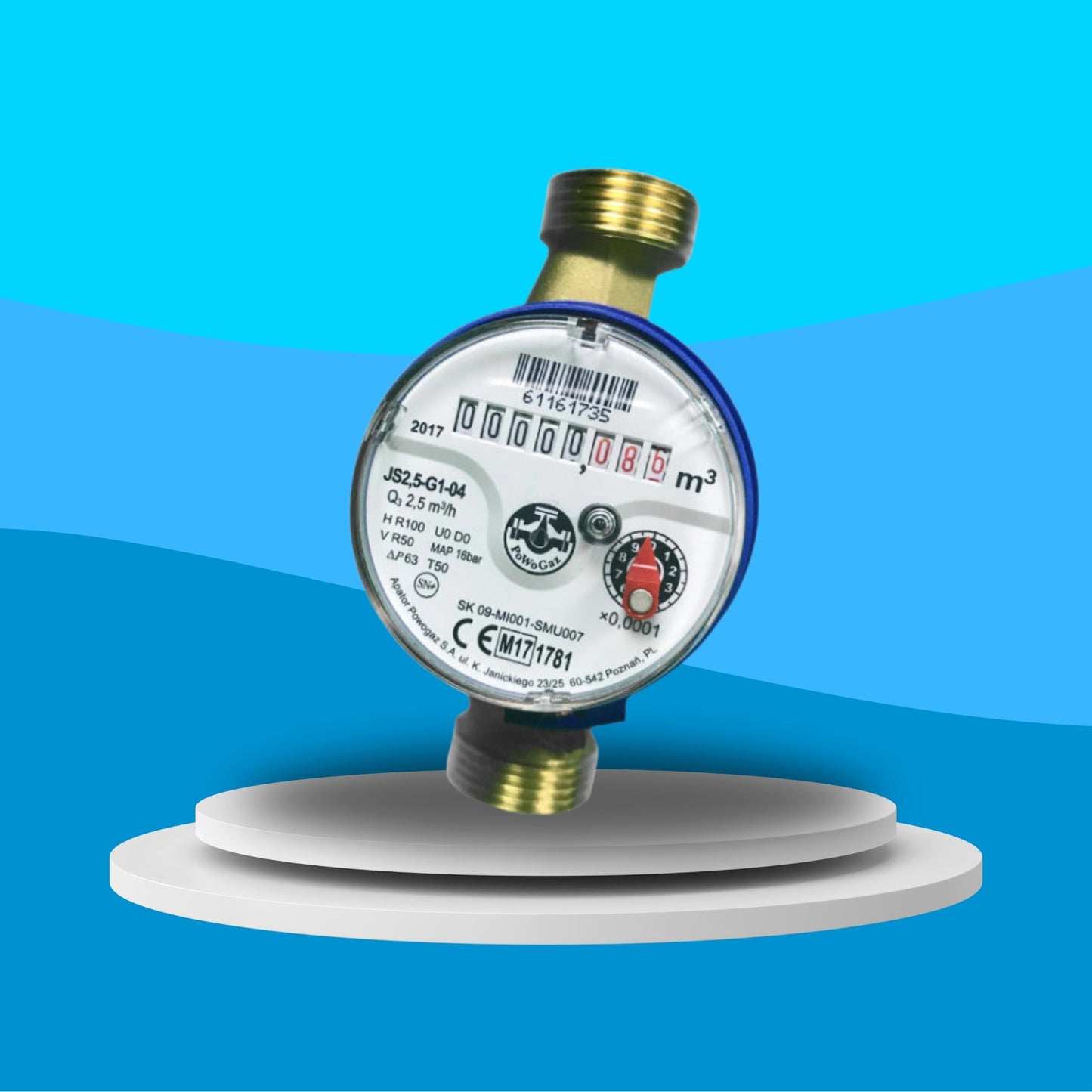Wras Valves
Wras Approved Water Meter (Class B) - Male Threaded (Dry Dial)
Wras Approved Water Meter (Class B) - Male Threaded (Dry Dial)
Couldn't load pickup availability
Dry Dial | Male Threaded Connections | WRAS Approved | Class B Accuracy
The WRAS Approved Water Meter (Class B, Male Threaded, Dry Dial) is a reliable and compliant solution for measuring water consumption in residential and light commercial settings. Featuring male threaded ends, this meter is simple to install into standard pipework and is ideal for both new installations and retrofit projects.
The dry dial register remains isolated from the water flow via magnetic coupling, preventing condensation or dirt buildup and ensuring long-term readability. This makes it particularly suitable for use in humid or confined spaces. The Class B accuracy rating ensures dependable performance for typical flow ranges, making it suitable for billing, consumption monitoring, and general water management.
Fully WRAS approved, this water meter meets all UK regulations for use with potable water, giving you confidence in its hygiene and safety standards. Whether used in homes, small commercial buildings, or remote meter locations, this meter is built to offer accurate readings and a long service life.
WV - WM01
Share

FAQ's
What is the difference between a valve and an actuator?
What types of actuators are available?
The main types of actuators are:
Pneumatic actuators – use compressed air for fast, reliable operation.
Electric actuators – use electrical power for precise control.
Hydraulic actuators – use fluid pressure for high-torque applications.
Each type offers unique advantages depending on the environment, media, and system control needs.
How do I choose the right actuator for my valve?
To select the correct actuator, consider:
Valve type and torque requirement
Power source available (air, electric, or hydraulic)
Operating environment (temperature, humidity, hazardous area)
Control signal type (on/off or modulating)
Matching actuator torque and compatibility with the valve’s ISO mounting ensures reliable performance.
What are the main types of valves used in automation?
The most common valves in automated systems include:
Ball valves – for tight shutoff and quick operation.
Butterfly valves – for larger flow control with compact design.
Globe valves – for precise throttling and flow regulation.
Check valves – to prevent backflow.
Gate valves – for full bore flow isolation.
What’s the difference between a double-acting and spring-return actuator?
Double-acting actuators use air (or power) to both open and close the valve.
Spring-return actuators use air to open (or close) the valve, and a built-in spring to automatically return it to a safe position when power or air is lost — ideal for fail-safe operation.
How often should valves and actuators be serviced?
Regular maintenance intervals depend on operating conditions, but a good rule of thumb is to inspect every 6–12 months.
This includes checking for leaks, lubrication, seal wear, and actuator responsiveness to prevent unexpected downtime.

